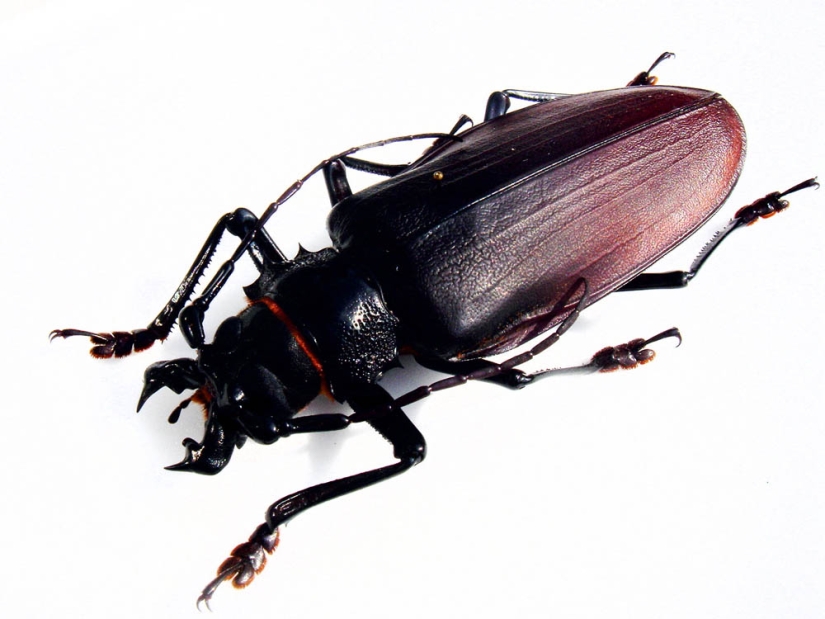What the Titan woodcutter, the world's largest beetle, looks like
Categories: Animals
By Pictolic https://pictolic.com/article/what-the-titan-woodcutter-the-worlds-largest-beetle-looks-like.htmlThe first place in the title of "The largest insect in the world" is deservedly awarded to the woodcutter-titan (Latin Titanus giganteus), whose body length can reach 17, and according to some sources, 21 centimeters!

Titanus giganteus is a species of beetle in the family Cerambycidae. It is one of the largest insects.
In most sources, the length of an adult is indicated in the range from 79 to 168 mm. In other sources, the maximum length is given differently — from 170 to 210 and even up to 220 mm. Accurate scientific data has not yet been obtained. The average length of most individuals is 130 mm, much less often there are individuals up to 150 mm long.
Only single specimens reach large sizes.

The cost of dried specimens of the maximum possible size for entomological collections can reach 680-1000 US dollars or more. The dry weight of the beetle is 22-26 grams.

Females are larger and bulkier than males. The color is pitch-brown or brown-brown.

The body is expanded and slightly flattened in the dorso-ventral direction. In the lateral projection, it has the shape of a lens.

The pronotum is characterized by the presence of three pointed spines on each side. The eyes are bulbous. The antennae are attached in front of the eyes, reaching half the length of the body.

The life span of the adult is 3-5 weeks, during which the beetles do not feed and live off the fat reserves accumulated at the larval stage.

It is nocturnal, which is typical for most closely related species.

At dusk, the activity of beetles increases, they crawl out of daytime shelters (forest floor, hollows, rotten stumps), climb to elevations and take off.

Males are very sensitive to light, as it is extremely rare for females to fall into entomologists ' light traps.

The woodcutter-titan is distributed throughout the Amazon - from Peru, Ecuador, Colombia, Suriname and Guyana to Bolivia and the middle part of Brazil.

The morphology of the larvae remains unknown, as they have not yet been discovered. When comparing the size of the adult and larvae of closely related species, it can be assumed that the size of the larva of the tree-titan should be 240-360 mm.

As in other species of the tribe Prionini, the larvae of the tree-titans presumably develop in the roots and basal zone of drying and dead trees. Pupation probably occurs in the soil.
Keywords: Animals | Record | Insects | Beetle | Largest
Post News ArticleRecent articles

Leonardo da Vinci was accused of being fond of orgies. William the Conqueror, despite all his successes, was called a "Bastard" ...

Modesty? Decency? A sense of tact? No, you haven't heard! Just look at what the people from the selection below are doing! No ...
Related articles

Nature is infinitely creative, but sometimes she's so like his own creation, she decides to repeat their children. Prikosatsya ...

Yes, Pets benefit our health and it is proven by science. Their very existence certainly makes us happier, but also prolongs life. ...

A series of works by photographer Brian VILS from new York, dedicated to girls, sheltered the homeless and abandoned cats. 'brien ...

American documentary photographer Bruce Davidson came to the UK in 1960 for a couple of months on the assignment of Queen magazine. ...